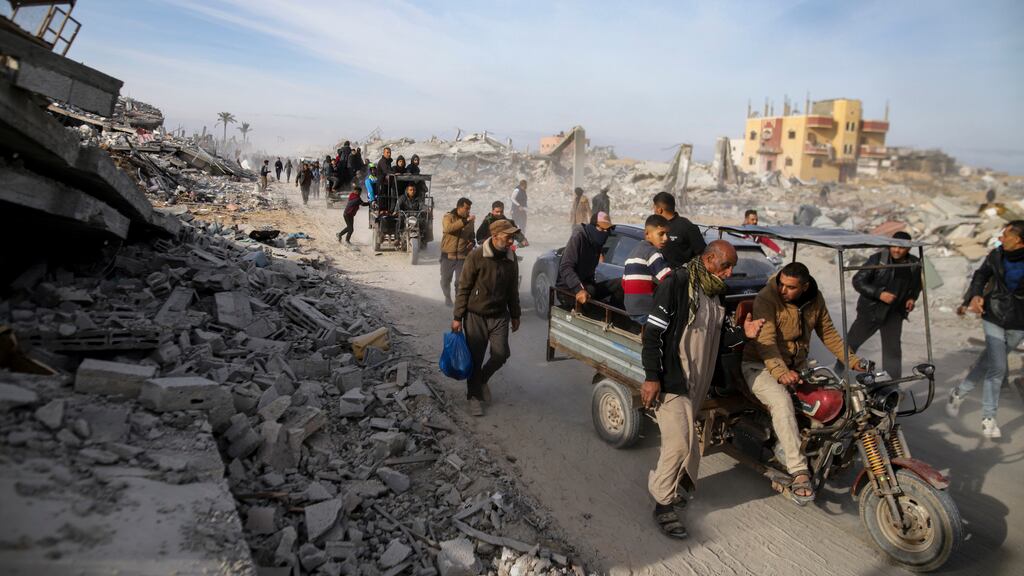An expected ceasefire in Gaza began with a delay of nearly three hours, as Hamas took longer to identify the three hostages they plan to release later this Sunday. Israel had stated that they would continue fighting in the strip until the names of the three women were provided, which were eventually released on the insurgent group’s social media approximately two hours later.
The first three hostages to be released were identified as Romi Gonen, Emily Damari, and Doron Steinbrecher.
PUBLICIDAD
This seemed to clear the way for the beginning of the ceasefire, which Israel said would start at 11:15 in the morning.
In the hours leading up to this, Israeli Prime Minister Benjamin Netanyahu criticized Hamas for delaying the identification of the hostages who will be exchanged for dozens of Palestinian prisoners.
After the original scheduled ceasefire start time at 8:30 am had passed, the Israeli army said it had attacked several militant targets in the north and center of the strip. The Gaza Health Ministry said at least three people were killed early Sunday morning in Gaza City, in the northern part of the territory.
The Nasser hospital, in the southern city of Jan Yunis, reported that an airstrike had killed eight people two hours after the scheduled ceasefire was supposed to begin.
Hamas attributed the delay in the delivery of the names to "technical reasons on the ground."
What happened in the first hours of the ceasefire?
Celebrations erupted throughout the war-torn territory and some Palestinians began to return to their homes, although the delay highlighted the fragility of the agreement. The agreement sets in motion a long and uncertain process aimed at ending the war and returning nearly 100 hostages kidnapped in the Hamas attack on October 7, 2023 that triggered the conflict.
Residents said families could be seen returning on foot, with their belongings loaded in carts pulled by donkeys.
"The sound of bombings and explosions did not stop," said Ahmed Matter, a resident of Gaza City. He mentioned seeing many families leaving their shelters and returning to their homes. "People are impatient. They want this madness to end," he said.
Ninety percent of the population in Gaza has been displaced. The UN says that the healthcare system, road network, and other vital infrastructures have been severely damaged. Reconstruction, if the ceasefire reaches its final phase, will take several years at least.
What will the first part of the ceasefire be like?
The first phase of the 42-day ceasefire should involve the return of a total of 33 hostages from Gaza and the release of hundreds of Palestinian prisoners and detainees. Israeli forces are supposed to withdraw to a separation zone within the strip, and many displaced Palestinians should be able to return home. The devastated territory should also see an increase in humanitarian aid.
This is only the second ceasefire in the war, longer and more significant than the one-week pause over a year ago, with the potential to end the fighting definitively.
Negotiations on the much more difficult second phase of this ceasefire should begin in just over two weeks. There are big questions remaining, such as whether the war will resume after the initial six-week phase and how the rest of the nearly 100 hostages in Gaza will be released.
